Royal Enfield Images For Drawing
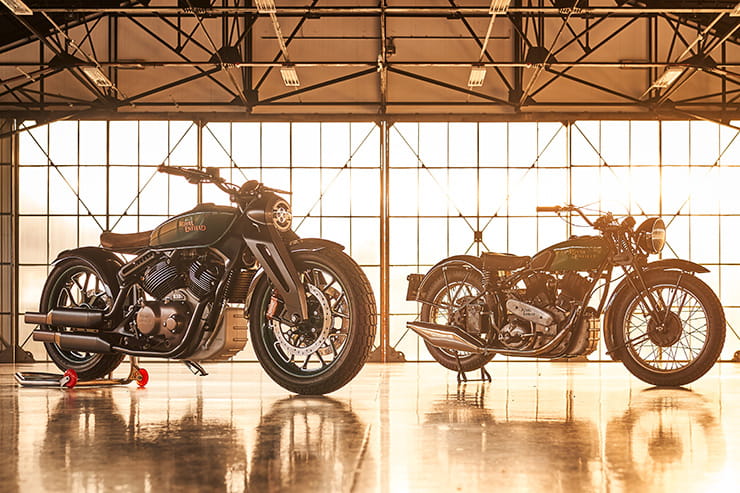
Royal Enfield wants to dominate the mid-sized motorcycle market. It believes that riders wanting accessible, affordable, yet characterful bikes are under-represented around the world. And it seems to be going the right way about changing that…
Making over one million motorcycles a year (that's more than one every two seconds), Royal Enfield is already a major player in the motorcycle market. I spoke to Mark Wells, Head of Product Strategy and Industrial Design at Royal Enfield and Simon Warburton, Head of Product Development. Working out of Royal Enfield's technology centre at Bruntingthorpe Proving Ground near Leicester, they're part of a 160-strong team linked directly to the company's world-wide HQs and three Indian factories. We were also joined by Adrian Sellers, Group Manager of Industrial Design (and a former Senior Designer at Honda R&D Europe).
With obvious parallels to be drawn between many of Royal Enfield's bikes and Triumph's classically-styled motorcycles, it's no surprise to hear some of the same buzz-words – like 'authentic' – when talking to the team at the company that has seen more than 70% growth in the UK and Europe over the past two years.
The two motorcycle super-powers are in many ways looking at very similar markets, at least here in Britain, but having been building bikes continuously since 1901 (you can read more about the history of Royal Enfield here ), Royal Enfield has every right to consider itself 'authentic'. Not that Simon's previous job as Design Engineer then Product Manager – between 1997 and 2014 – at Triumph Motorcycles has anything to do with what occasionally appear to be some friendly jibes at Hinckley from the team working just 15 miles away…
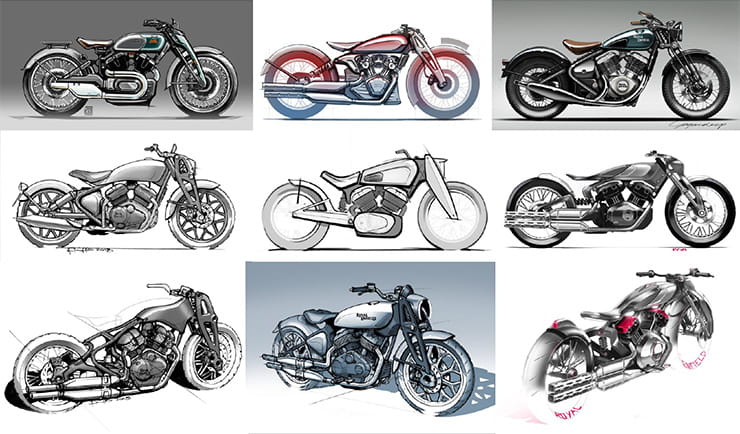
These sketches of the TX prototype were an opportunity for Royal Enfield designers to show what a future bike could look like.
What process do you go through when it comes to creating a bike?
Mark: "We have many ideas for proposals, looking more than five years into the future, but they begin from anywhere within the business – customers, the sales team, designers, marketing, press etc.
"All ideas are entered into a document system, then we agree with the senior management team what we're going to work on. From there we start with initial sketches and ideas to put some projects together, but we're always looking at what the customer will want.
"We use a 'gate' process for each stage of production, which gives us constant checks that we're achieving what we set out to, and that we're making the right decisions. The investment goes up as we pass through each stage gate, so we're able to constantly check the risk and that we've made the right trade-offs before the final quality-control gate, then production. We're also test-riding designs right through the whole process."
Simon: "By using this gate system for the past five years, there have been delays of course, but we've never had to cancel a project that had entered the process. We're always looking at ways to complete all the projects we have in progress (14 projects were presented last year), but there'll always be more ideas than we can possibly do."
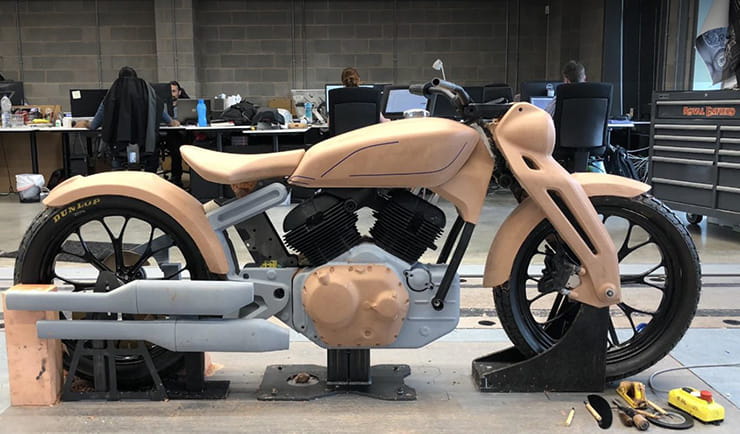
Creating a bike involves more than just pen and paper – from sketches to 3D renders to clay models and onto working prototypes, every step of a motorcycle's development is carefully monitored.
So does designing a motorcycle start with a blank sheet of paper?
Mark: "We rarely start designing a bike from a true blank sheet of paper – we start from a clearly defined set of goals that have been put together from an initial idea.
"We have design and development teams spread out across an office in the north of India, the Chennai tech centre and of course the one here in the UK; we all talk daily."
Simon: "We have the Industrial Design team that makes the 2D and 3D sketches and renders, then we have the Engineering Design team split across chassis, engine and electrical. Within those teams we'll have several designers submitting ideas, but once a project is agreed, we're all working in the same direction."


Royal Enfield's factories have a huge amount of automation now, but the company still incorporates many human touches, including hand-painted coach lines on the tanks
Who decides that a new bike will go into development and how long does it take?
Mark: "The decision really is a team process – my team will look at the features and attributes that are important in any project, but will then present it to multiple people across the company. And the board will have to the agree it, so many people are involved."
Simon: "As to time, if it's a brand-new bike with a new engine it can take four years, but not every project is an all-new motorcycle with every component created from scratch, so many can take significantly less time. We won't say how much it costs to put a new bike into production, but it's a lot. More than 10 million Euros. But there's been so much investment across the company that we can't really put a number on how much it costs to develop just one motorcycle."
Royal Enfield's new twins
Royal Enfield's promotional video featuring the new 650cc parallel twin
Mark: "At each gate we invest more in development and tooling, but the decision to go to market is made right at the start of the project's life. Part of our system is to try to get to the stage of testing production processes as soon as possible – be it the tooling or the work that goes in after a machine has pressed a part out, for instance the two halves of a tank."
Simon: "The UK team was formed due to Royal Enfield's ambition to become a true global brand; we needed an international presence for international markets.
"Of course, there was an obvious brand synergy in the UK [due to the company's long history], but also the working language is English. And there's a great engineering heartland in the centre of the UK; a very good ecosystem of talent for prototyping and development.
"There were other possibilities in other countries, but the UK had so much going for it. While 160 people work at the Bruntingthorpe tech centre, 16 nationalities are represented and people from around the world move to work here (despite the food)."
How Royal Enfields are made
Promotional video giving an interesting insight into parts of the Royal Enfield factory
Is Brexit going to be an issue for Royal Enfield with such a strong UK base?
Simon: "In terms of how the tech centre operates, no, as we don't produce hardware or goods, just prototypes, which isn't directly affected. But if Brexit makes the UK less or more attractive as a location for hiring people from around the world, that could have an indirect affect down the road.
"Other than that, all the motorcycles sold in Europe are imported direct from India."
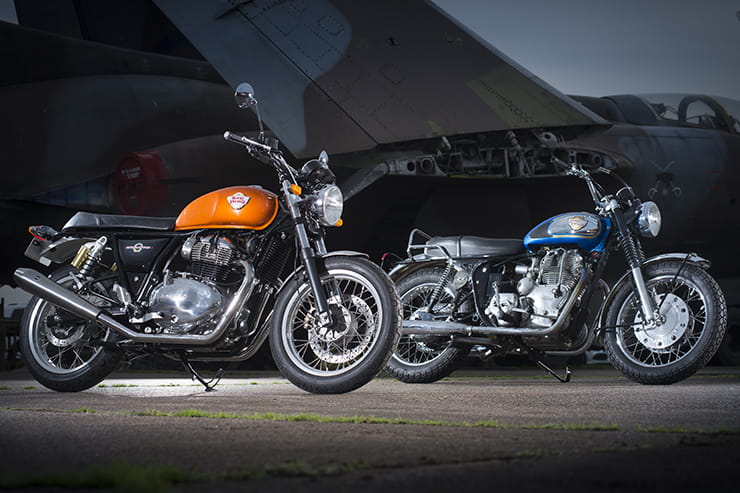
Royal Enfield is rightly proud of its genuine heritage. Here the new Interceptor is shown next to the original from the late 1960s. You can read more about Royal Enfield's history here .
What would your response be to people who say Royal Enfields look old-fashioned?
Mark: "Our goal is never to look old-fashioned – it's about finding a universal appeal. The trick is to capture the essence of what we like, but our bikes should never look dated. They should look authentic, but be fit for purpose today. There are things that we design that pick up on cues from the past, but there are modern features like discs and ABS that mean a Royal Enfield of today has many things that tell you it's not an old-fashioned motorcycle.
"It's the difference between retro appeal and being old-fashioned or dated. It's creating a product that isn't pretending; we make an air-cooled engine that really is an air-cooled engine. We're not trying to make a water-cooled engine look air-cooled."
Adrian: "There are certain things that are culturally fundamental – what we try to do is make our motorcycles new, but with references that people respond to and have a subconscious love for. With technology getting so complicated, there's a huge value in people having simplicity and accessibility. Being able to step up to a bike and know what it is; to be able to easily understand it."
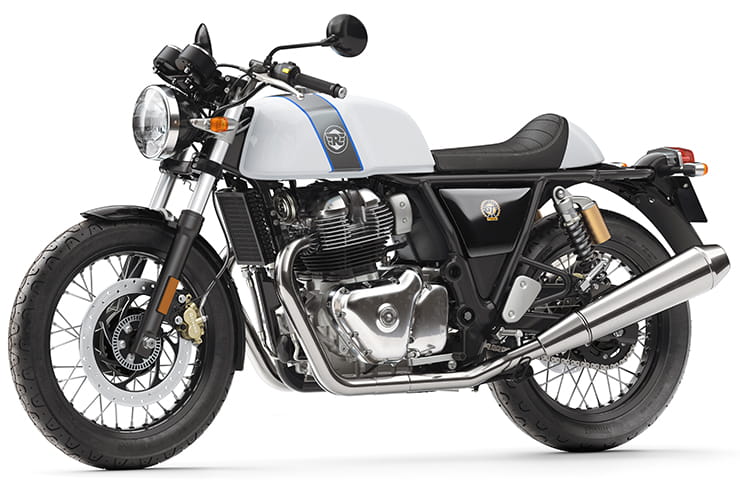
The Royal Enfield Continental GT echoes many of the styling cues of its older brother, but it's a classically-styled bike with the modern equipment needed to meet today's requirements.
What are the issues in making bikes for both European and Indian customers?
Simon: "There are environmental considerations but mostly, motorcyclists around the world want the same thing.
"All our bikes and designed and engineered to be used globally. We have road testing ongoing in India and in Europe as there are different stresses and strains that you encounter in different parts of the world. In India, road quality can be poor, but the speeds are lower. People are accelerating and braking harder in Europe and riding faster.
"We do anticipate that some models will be more popular in one market or the other, but we aim to satisfy customers in all areas of the world."
Mark: "We start by talking to consumers in markets all around the world with consumer clinics, focus groups and dealer clinics, plus informal research such as looking at the custom scene and examining lifestyles.
"We do have different demographics; in India the Interceptor is considered a large capacity motorcycle – a second or third step up on the rung – and classic 350s are generally used for commuting. But in Europe it's potentially an entry-level machine or a second bike.
"The huge advantage we have is the economy of scale that allows us to offer the same product to different demographics in different markets. They all want characterful and soulful motorcycles that do more than move you from A to B, and our bikes are very accessible for all those demographics. Himalayan sales for instance are roughly split between the Indian and export markets, so it's working for all consumers."
The Royal Enfield Himalayan is just one example of how the company designs machines to appeal to a global market – here we get the first look at its new colours for 2020.
Mark: "The end-users are in many ways different around the world, but the core things that make any of us excited about motorcycles are the same. So in many ways a Royal Enfield is a universal product." And that economy of scale is how Royal Enfield can offer its motorcycles at a price that's so much lower than many of its competitors.
Adrian: "It's important for us to not just respond to markets, but to lead it in both thought and application. In a new model development we look at everything to get an idea of what people are thinking now, and predict what they'll be thinking in the future. We can lead the thought processes through customisation projects rather than just watching and responding.
"We never want to fall into the trap of seeing something and trying to be part of it, or it could end up being over by the time the bike is released."
"The custom world gives a hint of the future, and gives us the opportunity to lead it."
Mark: "The most difficult step in the design process is defining the product to ensure it's what the consumer will want. Getting the younger demographic onto motorcycles in Europe is key to the whole industry, but we've seen a nice shift in slightly younger customers coming on board with the Interceptor and the Continental GT as they're A2 licence-friendly and more affordable. Plus they're cheap and easy to customise."
From clay model to race-spec show bike…
Join Bennetts BikeSocial's Michael Mann as he meets Royal Enfield's in-house custom team
How important is the custom scene to Royal Enfield?
Adrian: "Customisation is a way to respond to design directions and to test things, but it's also a way to lead directions. It's a quick way to test a concept using an existing platform, and to get ideas of what customers are thinking, and what they want to do with their motorcycles.
"Our bikes are quick and easy to customise as the electrics are so simple for instance; you don't pull a plug out and find the whole thing shut down. Gremlins are unlikely to creep in while customising a Royal Enfield, so pro builders can create something very quickly. And metal panels can be reshaped, so we're capitalising on the inherent characteristics of our brand.
"Customers who want to modify their bikes themselves are able to buy a Royal Enfield for a relatively small price, then spend the money customising and often spend less than the cost of another brand's bike alone. Customisation is just as affordable as the base motorcycle with Royal Enfield."
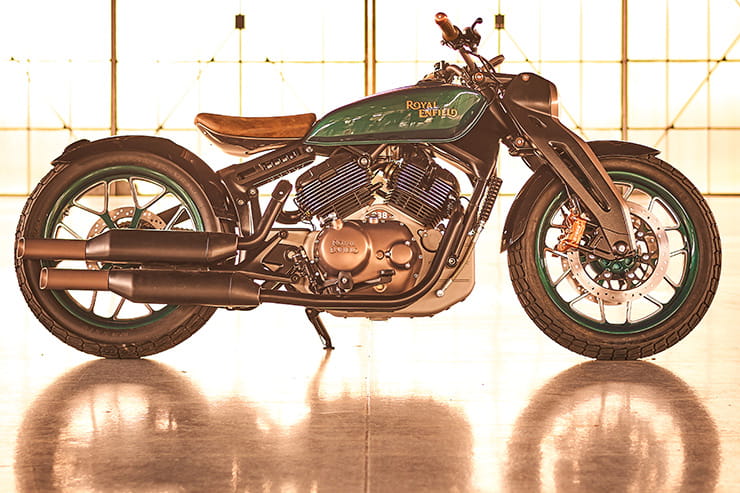
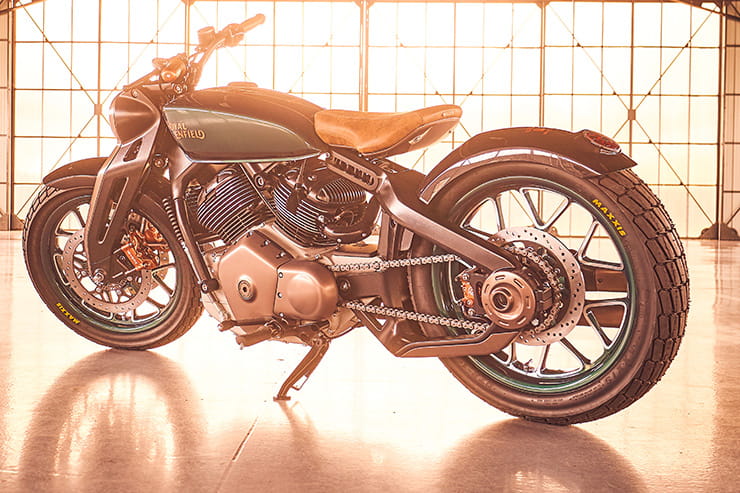
The TX concept bike, shown at the 2018 EICMA show, was "just sticky-backed plastic, bottle tops and string… and some slightly more advanced forms of prototyping. But it's certainly not a production motorcycle," according to Mark Wells. Personally, I really hope that's a bluff, because this thing looks gorgeous.
What are the most difficult challenges for the future of motorcycling?
Simon: "The legislation we have now is no problem, but it's what comes down the line; legislation that'll be pushing us towards people using public transport.
Mark: "The biggest challenge today is how we get new people onto bikes. Generally they're risk averse and want instant gratification. Video games, skate-boarding and things like that – you just get on and learn as you go, which is what the younger generation is used to; video games used to come with a big instruction book, but now you just learn as you play. The challenge is getting the younger generation to try motorcycling, to experience the sense of freedom and joy. We need them to make that first step."
Adrian: "Customisation is a way to get people into motorcycling through personalisation – everybody does it with their phones and computers as it's a cultural thing, but legislation is typically against customisation. Even today you see people riding around with modifications that are illegal. It's tricky for our teams to design custom parts that people want, but that meet legislation.
"But we'll evolve, and we'll still be able to find things that appeal to people in the future..."
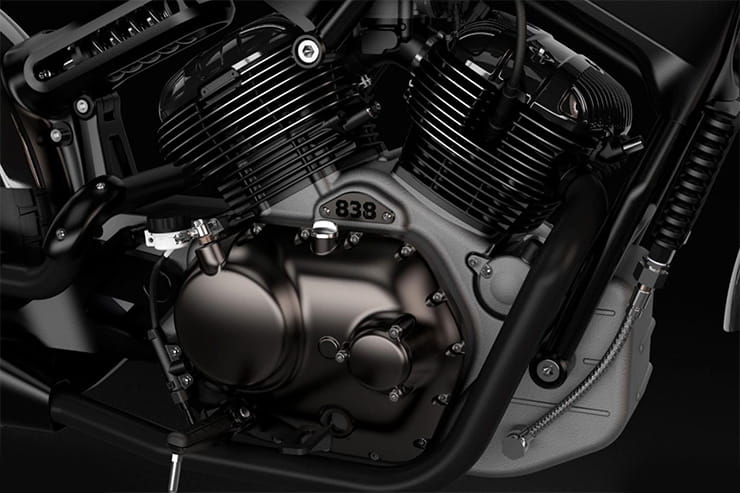
The V-twin engine shown in the TX concept bike echoes back to the 1921-1938 KX. It might have been nothing more than a concept, but I'd be surprised not to see a motor very similar to this from Royal Enfield in the near future…
Royal Enfield Images For Drawing
Source: https://www.bennetts.co.uk/bikesocial/news-and-views/features/bikes/how-motorcycle-designed-royal-enfield-production
Posted by: lopezwavers.blogspot.com

0 Response to "Royal Enfield Images For Drawing"
Post a Comment